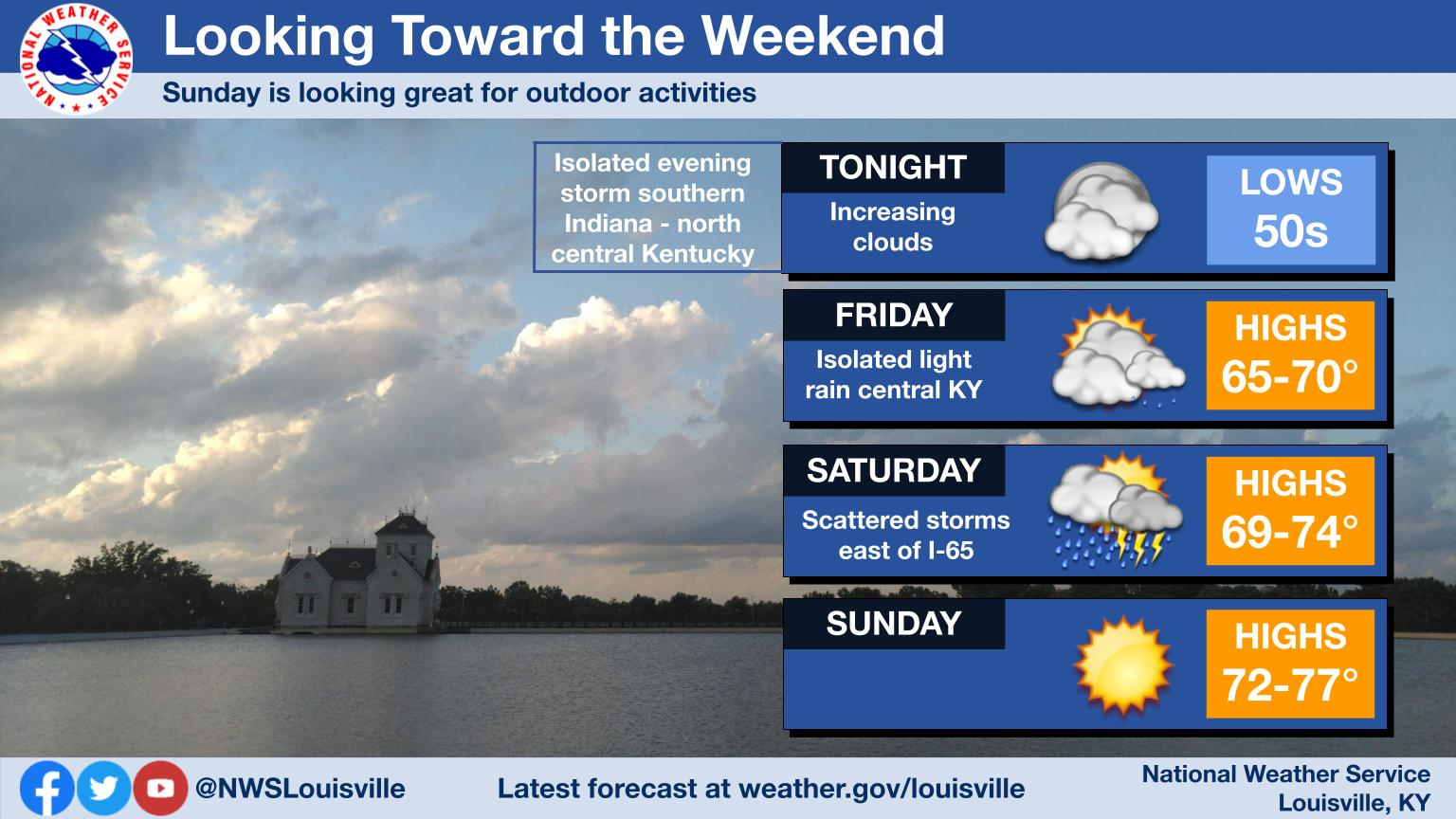
Lake effect snow showers will continue through Saturday downwind of Lakes Erie, Ontario and the eastern portion of Lake Superior. A series of storm systems will continue to impact California and the Pacific Northwest through the weekend and into next week, bringing widespread rainfall, mountain snowfall, and gusty winds. Coastal flooding is expected in northern California. Read More >
Louisville, KY
Weather Forecast Office
 |
|
With NWS Doppler radar, all elevation angles (tilts) within a particular volume scan can be viewed very quickly using the "All Tilts" product. For example, in volume coverage pattern (VCP) 212 (i.e., radar's antenna scan strategy), the radar scans 14 elevation angles in about 4 minutes. From the data, forecasters can quickly assess the full vertical structure of thunderstorms, such as storm height, deep high reflectivity cores, storm tilt which is related to vertical wind shear and storm type, and other information. It greatly assists the severe storm warning decision making process. Above is All Tilts reflectivity data at 2014 UTC on March 2, 2012. Only every other tilt is shown (i.e., only 7 images instead of 14). The first (lowest) image at 0.5 degrees elevation shows numerous severe storms, while the last (highest) image at 19.5 degrees overshoots the top of most storms and shows only anvil debris near the radar. Storm tilt to the southeast with height is evident for two supercells over southern Indiana with a deep core of high reflectivity and hail aloft. In addition, the eastern supercell near the Scott-Clark County, IN line shows a bounded weak echo region (BWER) aloft (small area of lower reflectivity values), which denotes the location of the rotating updraft (mesocyclone) in the storm. This cell produced a strong tornado in Clark County. |
Current Hazards
Hazardous Weather Outlook
Storm Prediction Center
Submit a Storm Report
Advisory/Warning Criteria
Radar
Fort Knox
Evansville
Fort Campbell
Nashville
Jackson
Wilmington
Latest Forecasts
El Nino and La Nina
Climate Prediction
Central U.S. Weather Stories
1-Stop Winter Forecast
Aviation
Spot Request
Air Quality
Fire Weather
Recreation Forecasts
1-Stop Drought
Event Ready
1-Stop Severe Forecast
Past Weather
Climate Graphs
1-Stop Climate
CoCoRaHS
Local Climate Pages
Tornado History
Past Derby/Oaks/Thunder Weather
Football Weather
Local Information
About the NWS
Forecast Discussion
Items of Interest
Spotter Training
Regional Weather Map
Decision Support Page
Text Products
Science and Technology
Outreach
LMK Warning Area
About Our Office
Station History
Hazardous Weather Outlook
Local Climate Page
Tornado Machine Plans
Weather Enterprise Resources
US Dept of Commerce
National Oceanic and Atmospheric Administration
National Weather Service
Louisville, KY
6201 Theiler Lane
Louisville, KY 40229-1476
502-969-8842
Comments? Questions? Please Contact Us.


 Weather Story
Weather Story Weather Map
Weather Map Local Radar
Local Radar